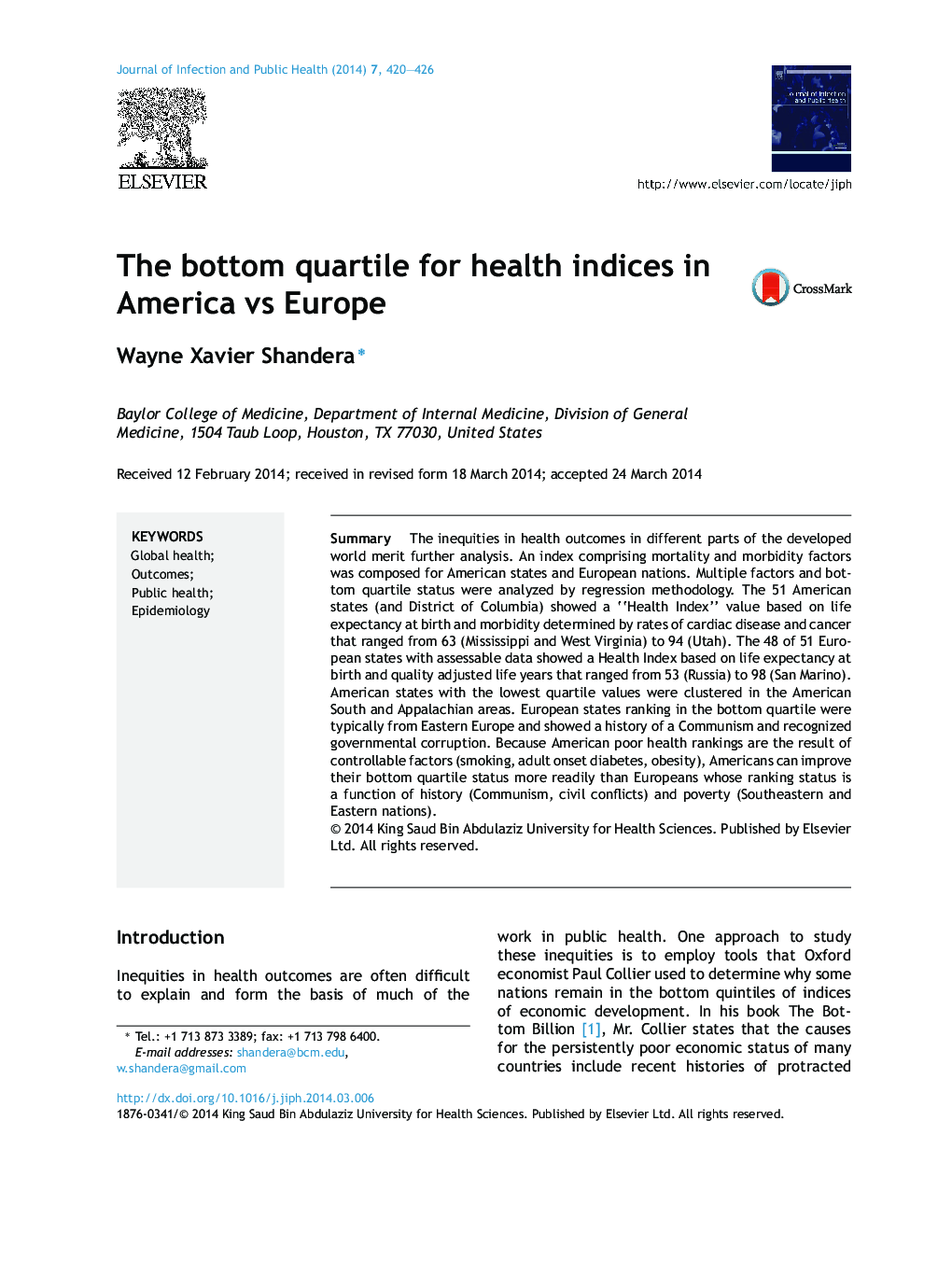| Article ID | Journal | Published Year | Pages | File Type |
|---|---|---|---|---|
| 3406067 | Journal of Infection and Public Health | 2014 | 7 Pages |
SummaryThe inequities in health outcomes in different parts of the developed world merit further analysis. An index comprising mortality and morbidity factors was composed for American states and European nations. Multiple factors and bottom quartile status were analyzed by regression methodology. The 51 American states (and District of Columbia) showed a “Health Index” value based on life expectancy at birth and morbidity determined by rates of cardiac disease and cancer that ranged from 63 (Mississippi and West Virginia) to 94 (Utah). The 48 of 51 European states with assessable data showed a Health Index based on life expectancy at birth and quality adjusted life years that ranged from 53 (Russia) to 98 (San Marino). American states with the lowest quartile values were clustered in the American South and Appalachian areas. European states ranking in the bottom quartile were typically from Eastern Europe and showed a history of a Communism and recognized governmental corruption. Because American poor health rankings are the result of controllable factors (smoking, adult onset diabetes, obesity), Americans can improve their bottom quartile status more readily than Europeans whose ranking status is a function of history (Communism, civil conflicts) and poverty (Southeastern and Eastern nations).
